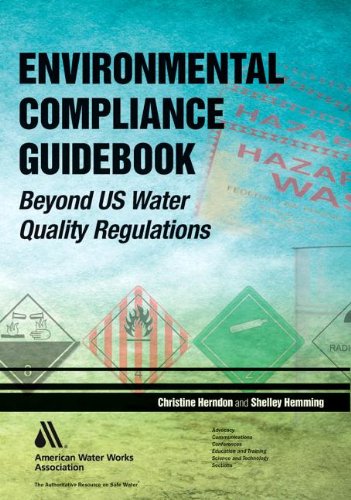

Most ebook files are in PDF format, so you can easily read them using various software such as Foxit Reader or directly on the Google Chrome browser.
Some ebook files are released by publishers in other formats such as .awz, .mobi, .epub, .fb2, etc. You may need to install specific software to read these formats on mobile/PC, such as Calibre.
Please read the tutorial at this link. https://ebooknice.com/page/post?id=faq
We offer FREE conversion to the popular formats you request; however, this may take some time. Therefore, right after payment, please email us, and we will try to provide the service as quickly as possible.
For some exceptional file formats or broken links (if any), please refrain from opening any disputes. Instead, email us first, and we will try to assist within a maximum of 6 hours.
EbookNice Team

Status:
Available4.5
24 reviews
ISBN-10 : 1583218572
ISBN-13 : 9781583218570
Author: Christine Herndon, Shelley Hemming
Almost every US water and wastewater utility must comply with US environmental protection regulations covering air emissions, hazardous materials and wastes,toxic substances, and other issues. This useful new book will help you avoid violations ofUS environmental law.
The book addressesthe safe handling, disposal, and storage of all regulated substances to be in compliance with the laws. The book tells you:• Which environmental laws apply to your utility and when they apply• What the laws say and mean• Which US federal agencies are responsible for enforcement • What is required of your utility to comply with the laws• Which violations are most common with utilities
1 Hazardous Waste Management
1.1 Introduction
1.2 Regulatory Authorities
1.3 Essential Program Elements
1.4 Hazardous Waste Generator Specific Requirements
1.5 Universal Waste
1.6 Incompatibility
1.7 Waste Minimization/Pollution Prevention
2 Hazardous Materials Management
2.1 Introduction
2.2 Regulatory Authorities
2.3 Essential Program Elements
2.4 Emergency Planning and Community Right-to-Know Act
2.5 Flammable and Combustible Liquids-
2.6 Compressed Gas Storage
2.7 Hazmat Training Applicability and Requirements
2.8 Hazardous Material Transportation
2.9 Overcoming Common Findings
3 Petroleum, Oil, and Lubricants
3.1 Introduction
3.2 Regulatory Authorities
3.3 Essential Program Elements
3.4 Spill Prevention Control and Countermeasure Plan
3.5 Discharges and Spills
3.6 Used Oil
3.7 Overcoming Common Findings
4 Wastewater
4.1 Introduction
4.2 Regulatory Authorities
4.3 Essential Program Elements
4.4 Stormwater Discharge Types
4.5 Samples and Analytical Testing Required for NPDES Compliance
4.6 Managing Industrial Stormwater
4.7 Allowable Nonstormwater Discharges
4.8 Overcoming Common Findings
5 Storage Tanks
5.1 Introduction
5.2 Regulatory Agencies
5.3 Essential Program Elements
5.4 New and Upgraded UST's
5.5 Existing USTs
5.6 Petroleum USTs
5.7 Changes in Service and Closure
5.8 Emergency Generator USTS
5.9 Hazardous Waste Storage Tanks
5.10 Flammable/Combustible Liquid Storage
5.11 Used-Oil Storage Tanks
5.12 Overcoming Common Findings
6 Pesticide Management
6.1 Introduction
6.2 Regulatory Authorities
6.3 Essential Program Elements
6.4 Applicators
6.5 Record Keeping and Reporting
6.6 Overcoming Common Findings
7 Toxic Substances
7.1 Introduction
7.2 Regulatory Authorities
7.3 Essential Program Elements
7.4 Polychlorinated Biphenyl Compounds
7.6 Lead-Based Paint
7.7 Overcoming Common Findings
environmental compliance handbook
environmental compliance manual
environmental compliance checklist
environmental compliance documents
environmental compliance plans
Tags: Environmental Compliance, Guidebook, Beyond Water, Quality Regulations, Christine Herndon, Shelley Hemming